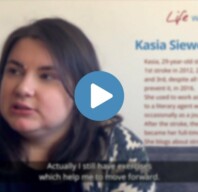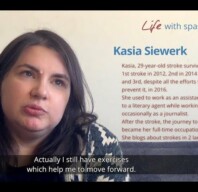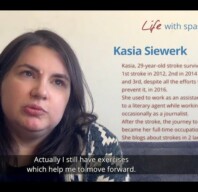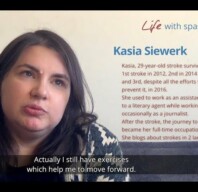Aids are available for many areas of daily living in order to make it easier for patients to cope with the challenges of everyday life. Using these aids can help patients to regain more independence and make it easier for them to participate in family and social life. Many of these aids are designed to be used with one hand, making it possible to do activities that can otherwise only be done with two hands.
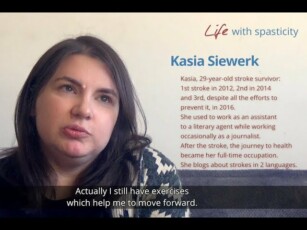
At-home exercises
There are a number of exercises that can be done at home to improve mobility or reduce acute spasticity. Regular exercises can improve the mobility of the area affected by the spasticity and ease patients` discomfort. This strengthens their perception and helps them to be more in tune with their own bodies. Always be sure to include sufficient rest breaks to allow the body to recover.
Movement patterns can be improved in particular by physiotherapy under the guidance of specialist therapists. Patients should talk to their GP about wether there are exercises that they can do at home for added benefit.
There are better and worse days. But nevertheless I welcome every single day, because each one of them might bring something good and unexpected.
Exercises example: Reducing spasticity in the hand
- First, clasp the affected hand with the healthy hand
- With the help of the healthy hand, place the affected hand onto a table or in your lap
- If possible, spread the fingers of the affected hand
- In this position, stretch the arms forward and move slowly up and down
Regular exercises can improve movement patterns. Always be sure to include sufficient rest breaks to allow the body to recover.
Orthoses
Orthoses can help to support some areas of the body. In this way, movements can be executed in a more controlled way and therefore more easily. Speak to your doctor about which orthosis is best for you.
An orthosis (an abbreviation formed from “or“thopaedic and pros“thesis“) is a medical aid that is industrially produced by orthopedic technicians and is available on prescription.
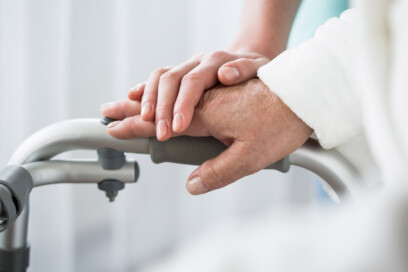
Aids to support everyday tasks
Cooking and eating
Spasticity sufferers can find it hard to feed themselves. Various aids in and around the kitchen mean that they can carry out simple tasks themselves again.
- Breadboard
The breadboard has a special bracket that secures the bread so that it cannot slip. This enables the bread to be cut with one hand. - Raised-edge plate
The raised-edge plate helps patients to push food onto a spoon or a fork using just one hand. It can easily be fixed to a plate. Alternatively a soup plate can be raised with a base attachment. - Single-hand decapper
The larger surface of the single-hand decapper provides more grip area and makes it easier to open a bottle, even with limited dexterity. - Cutting boards with vegetable holder
These special cutting boards can be fixed to the kitchen work surface with suction pads or clamps. Small metal tips make it easy to secure vegetables to the board so that they can be peeled or cut with one hand. - Single-hand chopping board
The single-hand chopping board has special brackets that are used to hook it to the edge of the table. It will therefore not slip when buttering bread for instance. - Adapted cutlery
The use of adapted cutlery that can, if desired, be bent back behind the handle, makes it easier to use the hand to eat.
Personal hygiene and dressing
Restricted mobility, misalignments or limited fine motor skills can make personal hygiene and dressing difficult. In this area too there are a number of different aids to help patients be more independent.
- Brushes and bath sponges
Attachments or long handles fixed to the sponge make it possible to wash hard-to-reach areas such as the legs or back with one hand. - Button hook
Button hooks make buttoning and unbuttoning as well as zipping and unzipping easier. It is therefore possible to do this with one hand or very limited dexterity. - Shoe horn
A long shoe horn helps those with limited mobility to put their shoes on.
Everyday skills
Limited mobility in spasticity patients can make it hard to pick up objects from the floor or unlock doors. Various aids can make gripping easier.
- Gripper
There are various types of gripper. They make it possible to pick up objects from the floor or table. - Key holders
A cover that can be pulled over the key makes it easier to grip the key and turn it in the lock.
Communication
Limited motor skills can make it difficult to use a telephone or computer and restrict everyday communication. There is a variety of different aids to help people use these appliances again and so increase their levels of social interaction.
- Large-button telephone
Large buttons make it easier to use the telephone. - Mouse replacement devices
Trackball mouses for example can make it easier to use the computer and replace the standard mouse. They enable the computer to be used with just one finger and so avoid unintentional keystrokes.
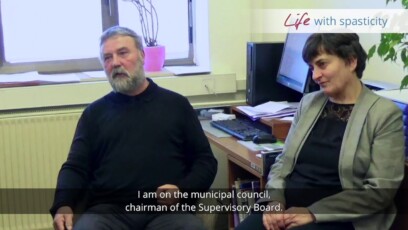
43 – What type of activities are you involved in?
In our 43rd video of the video campaign, Ivan Umek describes his different types of activity. The activities include things for the brain and for the muscles, which is very important for him.
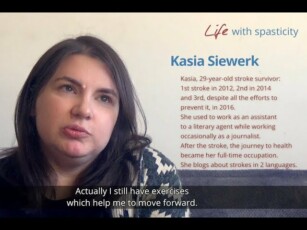
60 – Which rehabilitation devices do you use? part 3
In the 60th video of the video campaign Kassia continues to talk about the devices she uses at home. This time she introduces us to her hand strengthener and her stretching straps.
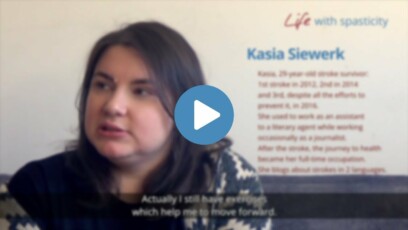
59 – Which rehabilitation devices do you use? part 2
In the 59th video of the video campaign Kasia continues to talk about the rehabilitation devices she uses at home. She explains what she did to help with muscular imbalance in her legs and how yoga helps her to grow in confidence.
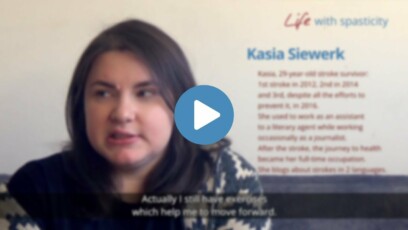
58 – Which rehabilitation devices do you use? part 1
In the 58th video of the video campaign Kasia talks about the training equipment she uses to work out at home and how the different devices can be utilized to support the rehabilitation process.
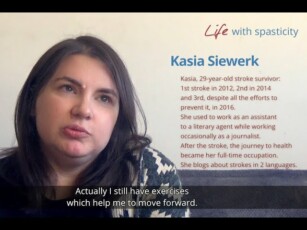
61 – Which rehabilitation devices do you use? part 4
In today's video Kassia introduces us to more of her practice equipment. The stability ball and the spiky ball, the spiky ball one of her favourites and she shows us which exercises she finds best.

62 – Which rehabilitation devices do you use? part 5
Today we show Part 5 of the video series: "devices I use". In the video Kasia presents her handmade "bean bags" and how she uses them.

63 – Which rehabilitation devices do you use? Summary
In the 63rd video of the video campaign we show you the summary of the single devices Kassia presented. So that you can once again get a complete overview.
We hope you enjoyed the video series of Kassia presenting her devices.
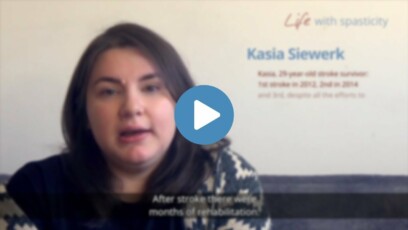
64 – Introduction to the trick board
In the 64th video of the video campaign Kassia introduces her trick board and how it helps her with the disease. She also encourages more Stroke surviovers and their relatives to work with it as it would help a lot with the recovery.


